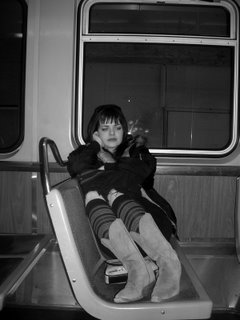Pay attention to things that come up more than once in a short period of time. It's not always a coincidence. Suicide is a theme for me to struggle with it seems. Please be assured that I'm not suicidal myself, but that I'm finding myself engaged in the topic with several people.
I have a pen pal named Beverly who is a prisoner in California. Her last letter was short and painful for me to read.
My dear Sista and friend,
This will be short--I just am upset today because a young woman here about age 26, hung herself. Yes, Kim she died right in her cell--the room mates were not around, I had last spoken to her during work but never was there any clue that she was having problems!
As I have mentioned before Kim, I have seen too much illness and death among my peers--these years have not been easy to do, yet I press on no matter what I endure because I'm leaving here Kim and no matter how tough being here is--taking your life is not an option, ever!
Well, I just felt too overwhelmed Kim and I thank God I can express my fears to you...
It's taking me longer to write back to Beverly this time. I've had to think of how someone in my situation can possibly identify with what she's feeling. My automatic response regarding suicide--that it's the end result of a potentially fatal illness, not unlike a heart attack--doesn't resonate with people. Most people that I've spoken to about this, still see suicide as a choice and not the result of what happens when a powerful organ like the brain is sick.
Maybe I am too much of a reductionist. It's just that despite how difficult it might be for people to understand that the mind is in the brain and no where else, it seems like too elusive a concept for most people to grasp.
Lately, people have come to accept the idea that sexual orientation isn't a choice. Before this awareness, homosexuality was viewed as a criminal deviancy, a crime against society. But now, most people seem to understand that a conscious choice is not what homosexuality is about. That people are born with their orientations and that their lives can be a struggle for acceptance.
Our brains are affected by stress. Depression is considered by
neuroscientists to result from chronic stress. Certainly being in a woman's prison at age 26 is depressing. When we're suffering from chronic stress, our brains are bathed with high levels of cortisol, the stress hormone. This compound can actually kill neurons in some brain regions and can affect the way the brain works.
Of course suicide can be prevented in many cases, but I think the more we consider this event to be a medical crisis, rather than a selfish, criminal act, the farther along we will be to finding compassion for the dead, their families and friends. No one stands around at a wake for an obese, middle-aged man snickering about how selfish he was to leave his family. If he had only exercised and dieted...or do they?
Untreated depression can be fatal. It's hard for me to see this any other way, just as it's hard for many of the people I've spoken with about this to see it this way. Our consciousness is a wonderfully complicated
phenomenon constructed from the cells inside our skull and when we try to understand this we falter as humans have throughout history.
To Beverly and other
survivors, the aftermath of a suicide seem more tormenting than a death by other means. We always struggle with questions of "why" or "if only," but we can say that for all deaths. Understanding the role of the sick brain in suicide can give survivors a break. They are no more responsible for the way a neuron is firing in someone else, than they are the way a loved one's heart is pumping. Think about accepting this as another natural, but no less tragic death and see if your heart opens up a little more.
I haven't begun to address the issue of health care for these prisoners. I wouldn't dare to absolve anyone who works there for this woman's death, if she wasn't receiving adequate care. From what I've been learning, the conditions there are abhorrent and medical negligence could possibly be a question in this case. But that's a different question to answer and a different state of mind to live in, than one where the survivors are looking at each other and the departed in a futile effort to make sense of a choice.














